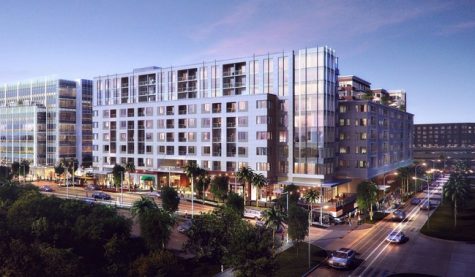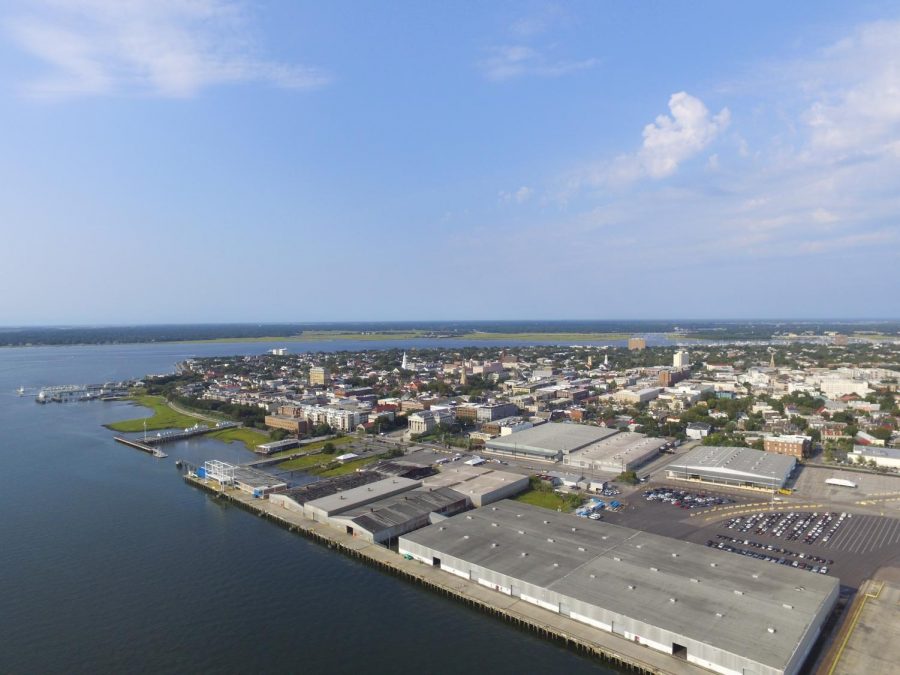Opinion: The Urbanization of Charleston
It is without doubt that the Charleston skyline has evolved over the last decade. The “Holy City,” known for its tall steeples and vast array of historic structures, has come to include towering structures you would expect in bustling urban cities. The Cooper River Bridge alone, beginning construction in 2001, dominates the skyline from almost any angle. Even the list of tallest buildings in Charleston (courtesy of Wikipedia) shows this trend of urbanization, as many newer constructions are replacing older churches downtown. These include four MUSC buildings and even two garages, a surprising statistic considering most can hardly name any of those six edifices.
In 2017, however, we are seeing an even larger surge of developments popping up on the Charleston skyline. It seems like every month a new apartment building emerges from out of nowhere. The new Holiday Inn, for example, on the corner of Woolfe and Meeting streets is one of the many hotels appearing in the mid-town area, in between the historic districts and the upper peninsula. The Hyatt House, a new 8 floor hotel with a rooftop bar, is positioned at the upper part of King Street near the crosstown. But now, in December of 2017, the hotels and condominiums are expanding into the historic districts of downtown. Pictures below of WestEdge show its immense size and proximity to the MUSC complex and other important districts of Charleston.


The urbanization of downtown Charleston seems to be a fairly hot topic now as numerous contractors are seeking land to develop new complexes. It is true that many of these complexes are simple in architecture and style, but I strongly believe that this is for the best. Many argue that Charleston is swamped with tourists, and though I cannot dispute this, I have reasons to support this. For one, there is limited amount of open surface area on the peninsula. This primarily causes companies to eye buildings or land in disrepair, which they can then demolish and rebuild with a clean slate. We see this with Sergeant Jasper, the eyesore of an apartment site built during the 1980s on the Lockwood Avenue turn, a prime opportunity turned into a hideous edifice. The building also never gained any public support and had trouble filling units. Thus, the new plans to build more modern complexes seemingly fill up empty space or areas with more potential. A second point that reassures me is that Charleston’s preservation codes are among the most detailed in the country. Homeowners cannot simply take a wall out of a historic home because they so please, as codes prevent them from destroying any element of history. The same goes for property downtown. Organizations like the Preservation Society or the Historic Charleston Foundation would not permit the allotment of certain land to contractors if there was significant historical structures to be preserved. A final measure to support my claim is that these developments would attract tourists from sources other than cruise ships, which have a bad stigma around downtown. The tourists instead would filter through Charleston Airport, which is greatly evolving due to the recent expansion and added service from multiple destination.








